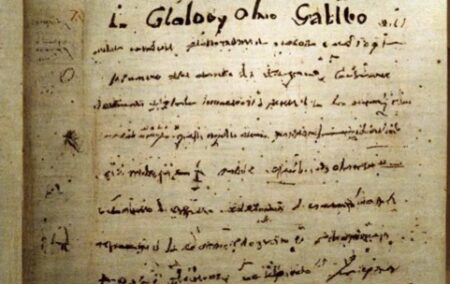The University of Michigan announced last week that one of the “jewels” of its library – a manuscript believed to have been written by Galileo Galilei – is in fact a forgery.
The manuscript, which has been in the university’s possession for almost a century, was believed to have been written by the astronomer and physicist in 1609 and 1610. It features a signed letter with sketches of moons in orbit around Jupiter as well as a description of a new kind of telescope Galileo was developing.
Before the news of the forgery was announced, the manuscript was prized as the “first observational data that showed objects orbiting a body other than the earth”.
The manuscript’s authenticity was first called into question by Georgia State University historian Nick Wilding, who, on looking at an image of it, had his doubts, citing the peculiar handwriting, ink colour and word choice.
“It just kind of jumps out as weird”, he told the New York Times.
Wilding contacted Pablo Alvarez, curator at Michigan’s Special Collections Research Centre, requesting the provenance information of the letter as well as a picture of its watermark in the hopes that it might reveal where the paper was manufactured.
Wilding found that the manuscript had at one point been in the hands of a notorious 20th-century forger named Tobia Nicotra. Ultimately, however, it was the watermark that gave the game away.
Wilding, with help from Alvarez, was able to confirm that the earliest watermark of its kind could be traced to the year 1770 – 160 years after the manuscript was supposedly created.
Following the piece of evidence, the University of Michigan concluded that the document was fake and that it was most likely a 20th – century forgery at the hands of Nicotra.
“It was pretty gut-wrenching when we first learned our Galileo was not actually a Galileo”, said Donna Hayward, interim dean of the university’s libraries, in an interview with The Times. However, she added, “The forgery is a really good one … The discovery in some ways makes this a more fascinating item”.
In a statement, Michigan said it is undergoing a “reconsideration of [the manuscript’s] place in the collection,” and that it “may come to serve the research, learning and teaching interests in the arena of fakes, forgeries and hoaxes, a timeless discipline that’s never been more relevant.”

